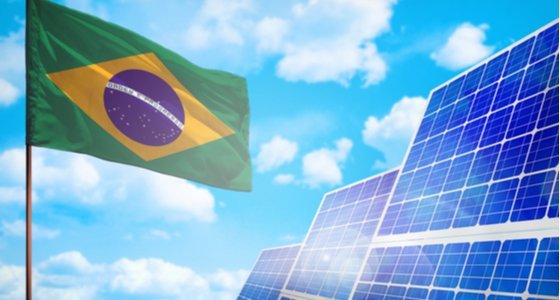Energy Earthshots: A decade of action towards clean energy economy
Soon after assuming office, the United States President, Joe Biden re-joined the Paris Agreement and took a slew of executive actions reaffirming America's commitment to leading clean energy revolution at home and abroad. As a part of President Biden's ambitious climate goals, the U.S. Department of Energy (DOE) was charged with accelerating research and development in linchpin technologies, essential in tackling the climate crisis and helping the US transition to a clean energy economy.
In the following interview, Kathleen Hogan, Acting Undersecretary for Science and Energy talks about DOE's Energy Earthshots Initiative, what it aims to achieve, the critical technologies it intends to support, and the avenues for funding and partnerships.
The DOE has launched the 'Energy Earthshots Initiative' – inspired by the Moonshot programs. Can you elaborate on the Earthshots Initiative and the climate action targets you hope to achieve?
Secretary of Energy Jennifer Granholm launched the 'Energy Earthshots' in response to President Biden's goal to accelerate breakthroughs of more abundant, affordable, and reliable clean energy solutions for all Americans. The Energy Earthshots are focused on the remaining innovation breakthroughs that we still need to solve the climate crisis, reach our 2050 net-zero carbon goals, and create the jobs of the new clean energy economy.
Hydrogen Earthshot and Long Duration Storage Earthshot – were the first two Earthshots announced, can you elaborate more on the significance of each in overcoming the climate crisis?
If the Hydrogen Shot target of 'clean hydrogen produced for $1 per kilogram within one decade' is achieved, clean hydrogen would transform our energy economy and enable cost-competitive carbon-free fuels for hard to decarbonize sectors such as cement, steel, and heavy-duty transportation, as well as serve as a long-duration energy storage solution.
As we know, long-duration energy storage is now the critical enabling technology needed to achieve complete grid decarbonization and harness renewable sources of power day or night. The goal of Long Duration Storage Shot to decrease the costs of storage by 90 percent within the decade would greatly increase the penetration levels of renewable energy onto our grid.
What are some of the key long-duration storage technologies DOE is focused on?
There are numerous technologies capable of storing energy for long durations of 10 hours or more, however, the key is to find the technology pathways that get us there in a way that meets the application need at the lowest possible cost. Currently, pumped storage hydropower is the most common technology used for long-duration storage, but we need more solutions. Hydrogen and other energy-carrying chemicals can also be used for long duration and even seasonal energy storage, as they can be scaled to large sizes, can store energy for long periods of time, and dispatch the energy for electricity generation when needed.
Redox flow batteries and bidirectional thermal technologies are also examples of potentially viable ways to store 10-plus hours duration of energy. Investing more in the R&D for options that deliver long-duration energy storage solutions will continue to drive down costs for these systems and help bring them to the scales we need.
What are some of the avenues being explored for raising the capital required to fund the deployment of long-duration storage?
DOE is committed to identifying new partnership opportunities that allow stakeholders to leverage federal funds to pursue innovative long-duration storage demonstrations. Validating the use of energy storage systems in novel ways can give investors confidence to undertake similar projects in the future. Through technical assistance, DOE is also helping stakeholders better quantify the value of storage, which can help unlock the capital required to deploy storage at scale.
Additionally, DOE's Loan Program Office (LPO) has made up to $4.5 billion available in loan guarantees for renewable energy and efficient energy projects, which can include long-duration energy storage projects located in the United States. This program has the advantage of giving borrowers access to debt capital beyond the current capability of private lenders, providing flexible financing that can be customized based on the project type, and offering support to project partners throughout the life of the project.
How many more Earthshots can we anticipate in the coming months?
The U.S. Department of Energy plans to announce between 4-6 Energy Earthshots over the next year.
To accelerate research and development in 'top linchpin technologies' for clean energy economy, DOE intends to hold stakeholder engagement events, including Energy Earthshot 'Summits', please share more on these engagement and partnership plans.
The Energy Earthshot Summits are a key step in DOE's focus on engaging stakeholders to participate in defining milestones and turning ideas into roadmaps that put us on the paths to achieving the Energy Earthshots targets within the decade. The Hydrogen Shot Summit and Long Duration Storage Shot Summit will be held virtually with a diverse set of community stakeholders from the researcher, investment, industry, national laboratory, regional organization, end-user, and environmental justice communities.
The Hydrogen Shot Summit on August 31-September 1 includes a plenary with senior leaders followed by breakout technical sessions on electrolysis, thermal conversion with carbon, capture, and storage, advanced pathways, and deployment and financing.
The Long Duration Storage Shot Summit on September 22-23 - World Energy Storage Day - will include joint sessions with the World Energy Storage Day Conference.





















